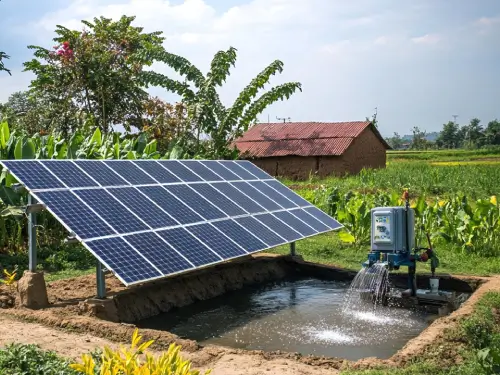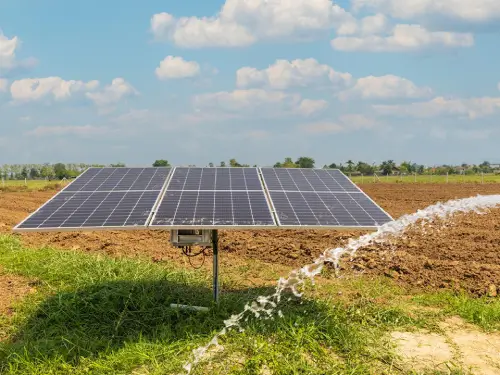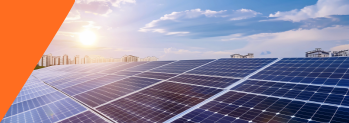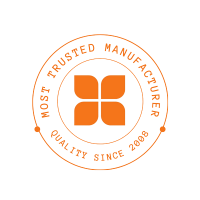A solar pump is a water-pumping system powered by solar panels, rather than electricity or diesel. It provides a sustainable and cost-effective means of accessing water for irrigation, livestock, and household use. The perfect solar pump is the right match for your water needs, lift height, cost, and efficiency. By carefully comparing your options and requirements, you can make a smart investment that serves you for years.
Understanding Water Requirements for Choosing the Right Solar Pump
The first step in selecting the perfect solar pump is to assess your water needs. This ensures you choose a pump that delivers the right output without wasting energy or money.
Next, calculate the total head, which is the vertical distance water must be lifted, plus friction losses:
Total Head = Static Head + Friction Loss
By combining your daily water requirement and total head, you can accurately decide the correct pump size that matches your needs.
Types of Solar Pumps
Solar pumps are broadly classified into four types, each designed for different water depths, energy setups, and usage needs.
1. Submersible Solar Pump:
These pumps are installed inside borewells or deep wells and are capable of drawing water from depths up to 50 metres. They are the best choice when the water table lies more than 20 feet below the surface. Since they operate during the day using solar energy, water is usually pumped into storage tanks for use later. These pumps are widely used for irrigation, livestock watering, household supply, and even rural drinking water systems.
2. Surface Solar Pumps:
These pumps are better suited for shallow sources like ponds, tanks, rivers, or open wells with water levels less than 20 feet deep. While they cannot lift water from great depths, they are effective in pushing water horizontally for up to 200 feet. This makes them useful for small farms, gardens, household water needs, and community water distribution
3. DC Solar Pumps:
These pumps run directly on direct current (DC) from solar panels, without the need for an inverter or battery. This makes them more energy-efficient and cost-effective compared to other options. They are ideal for small to medium applications such as kitchen gardens, livestock watering, or small-scale farm irrigation in areas with consistent sunlight.
4. AC Solar Pumps:
Having fewer moving parts than traditional pumps, solar pumps need little maintenance. Solar panels themselves tend to last 20–25 years, and the pumps themselves can last more than a decade with minimal upkeep
Choose Between DC and AC Solar Pumps
Selecting between DC (Direct Current) and AC (Alternating Current) solar pumps involves weighing efficiency, cost, noise, and serviceability.
| Feature | DC Pumps | AC Pumps |
|---|---|---|
| Efficiency | High : no inverter losses, fewer panels required | Slightly lower : inverter adds energy loss |
| Power & Flow | Best for moderate head and flow | Superior power : ideal for deep wells and high-volume usage |
| Noise & Build | Quiet, copper coil, durable | Noisier over time, uses aluminium : but reliable |
| Cost & Maintenance | Higher initial cost, specialized service | Lower cost, easier maintenance, and parts availability |


Size Solar Panels and Select Controller
The performance of your solar pump directly depends on how well the solar panels are sized and the type of controller used. Getting this combination right ensures consistent water flow and longer system life.
Panel Sizing Formula: To calculate the required solar panel capacity, divide the pump’s power (in watts) by the average peak sun hours available in your area.
Formula: Pump Power (W) ÷ Sun Hours = Required Panel Wattage
(Example: For a 1 HP (750 W) pump in India, assuming 6 sun hours per day, the required panel size is: 750 ÷ 6 = 125 W per hour → ~1,000 W panels needed (usually 3 × 330 W panels).
Controller Selection: A solar pump system must have a reliable controller to manage energy flow. MPPT (Maximum Power Point Tracking) controllers are the best choice as they adjust voltage and current automatically to extract maximum power from the panels.
Key Features to Look For in Controllers:
By correctly sizing panels and selecting an MPPT controller with these protection features, you not only optimize efficiency but also extend the lifespan of your solar pump system.
Estimate the Cost and Savings of Solar Pump
The total cost of a solar water pump is not just about the pump itself; it depends on several factors.
Every one of these factors influences the total cost of solar water pump deployment in India.
Average Total Cost of Solar Water Pump in India
| Pump Type | Capacity | Average Price (Before Subsidy) |
|---|---|---|
| Solar Surface Pump | 1 HP | ₹90,000 – ₹1,20,000 |
| Solar Submersible Pump | 1 HP | ₹1,00,000 – ₹1,40,000 |
| Solar Borehole Pump | 3 HP | ₹2,00,000 – ₹2,80,000 |
| Solar Irrigation Pump | 5 HP | ₹3,00,000 – ₹4,50,000 |
These numbers reflect basic solar pump prices in India and may vary by state policies, brand, and solar panel configuration. It’s important to consider the full cost, including installation and possible subsidies, when planning your purchase.
Government Subsidy for Solar Water Pumps
India’s PM-KUSUM scheme and state-level solar programs make solar pumps far more affordable. Subsidies can cover up to 90% of the total cost for farmers.
This financial support significantly reduces the total cost of solar water pump ownership and speeds up the payback period.
Installation And Maintenance Costs
This means the solar well pump cost is largely a one-time investment, with negligible running expenses, making it a highly cost-effective solution in the long run.




